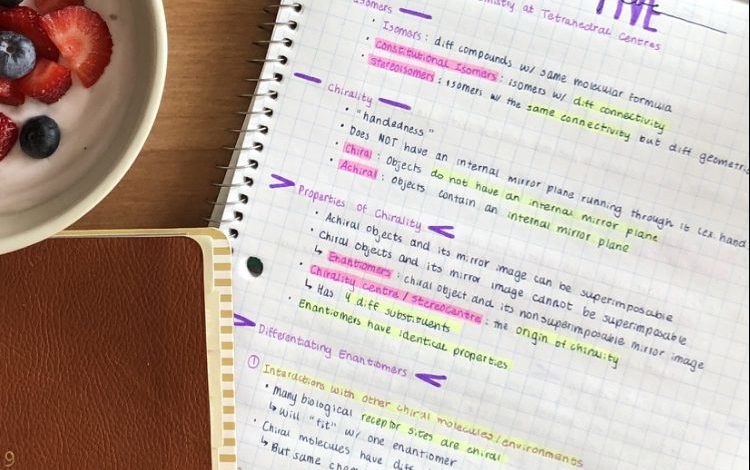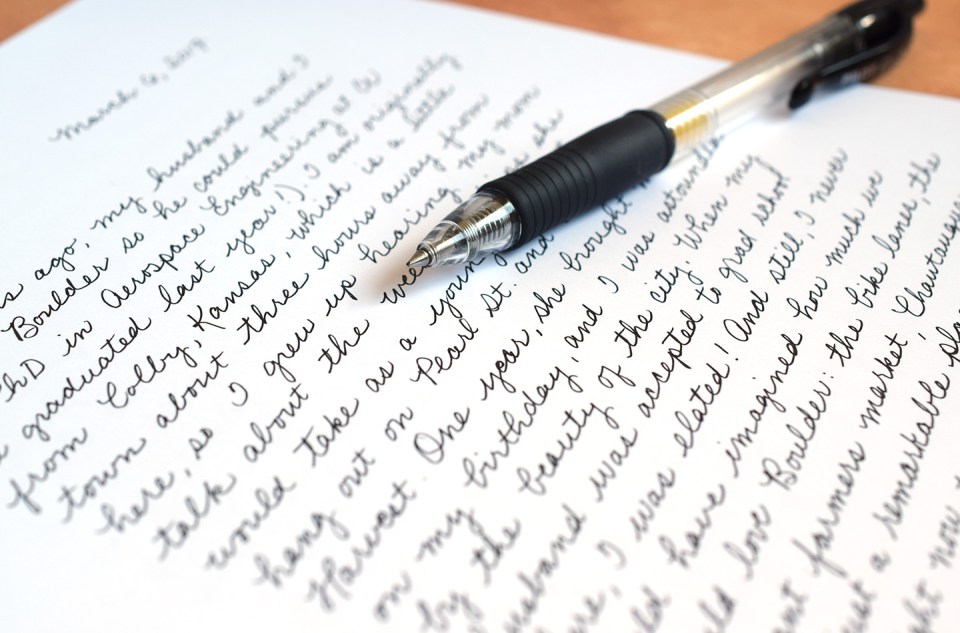Why Handwritten Notes Are Making a Comeback

Why handwritten notes are making a comeback is a question that highlights a surprising trend in our digital world. Despite the rise of laptops, tablets, and smartphones, more people are returning to pen and paper for taking notes, studying, and even communicating. This article explores the reasons behind this revival, the science supporting it, and how handwritten notes can boost memory, creativity, and connection. You’ll find simple explanations, real case studies, key features, tips, a comparison table, and answers to common questions.
Introduction: Why Handwritten Notes Are Making a Comeback
Why handwritten notes are making a comeback is a story about rediscovering the power of pen and paper in a world full of screens. Students, professionals, and creatives are realizing that writing by hand offers unique benefits for learning, focus, and personal connection.

Key Features of Handwritten Notes
- Tactile experience: Writing by hand engages touch and movement, helping the brain remember better.
- Personalization: You can doodle, draw, use colors, and organize notes your way.
- No distractions: Paper doesn’t have pop-ups, notifications, or battery issues.
- Slower pace: Writing forces you to slow down and think, improving understanding.
- Physical archive: Notebooks are easy to flip through and review later.
- Creativity boost: Handwriting encourages free thinking and brainstorming.
Why Handwritten Notes Are Making a Comeback: Historical Context and Modern Trends
The History of Handwritten Notes
Long before the digital age, handwritten notes were the primary way people recorded knowledge, communicated, and organized daily life. From ancient scrolls and medieval manuscripts to 20th-century diaries and business memos, handwriting shaped how societies learned and remembered.
- Early Education: For centuries, students learned by copying texts and writing essays by hand, reinforcing memory and comprehension.
- Business and Innovation: Great inventors like Leonardo da Vinci and Thomas Edison kept handwritten notebooks, sketching ideas that changed the world.
- Personal Communication: Letters, journals, and postcards connected people across distances, carrying emotion and personality.

The Digital Shift—and Its Limits
The rise of computers, tablets, and smartphones promised faster, more efficient note-taking. Yet, as digital tools became widespread, many noticed a decline in memory, attention, and personal connection. This sparked a renewed interest in handwriting, especially among students, professionals, and creatives.
The Science Behind Handwriting’s Benefits
Cognitive Processing and Retention
When you write by hand, your brain processes information in a deeper way. This is called generative note-taking—you don’t just copy; you summarize, rephrase, and organize ideas. Studies show that this process:
- Activates more brain regions related to memory and understanding.
- Improves recall compared to typing, especially for complex concepts.
- Encourages active listening during lectures or meetings.

Focus, Mindfulness, and Well-being
Handwriting naturally slows you down. This slower pace:
- Reduces distractions, since paper doesn’t have pop-ups or notifications.
- Promotes mindfulness, making you more present and engaged.
- Lowers stress, as the act of writing can be calming and meditative.
Creativity and Problem-Solving
The freedom to draw, doodle, and connect ideas visually on paper:
- Stimulates creative thinking and brainstorming.
- Helps with problem-solving, as you can sketch diagrams, mind maps, and flowcharts.
The Modern Handwriting Movement
Handwritten Notes in Education
Students and Teachers Return to Paper
- Case Study: At a Lagos university, students who switched from laptops to notebooks reported higher grades and better focus. Professors noticed more engagement and fewer distractions in class.
- Research: Studies from Princeton and UCLA confirm that handwritten note-takers outperform typists on conceptual questions.

Handwriting in Digital Classrooms
Even in online learning, many students print out notes or use digital pens on tablets to mimic the handwriting experience.
Handwriting in the Business World
Executives and Entrepreneurs
- Case Study: A Nigerian fintech CEO uses a leather-bound notebook for meetings, stating, “It helps me remember key points and shows I’m fully present.”
- Boardrooms: Handwritten notes are seen as a sign of respect and attention, especially in cultures where eye contact and engagement matter.
Creative Professionals
- Designers and architects often sketch ideas by hand before moving to digital tools.
- Writers and journalists use notebooks for interviews, drafts, and brainstorming.
Personal and Social Revival
Letters, Cards, and Journals
- Case Study: During the pandemic, handwritten letters surged as people sought deeper connections.
- Thank-you notes and personal cards are valued for their authenticity and emotional impact.
Mindfulness and Wellness
- Bullet journaling and daily gratitude notes have become popular for managing stress and setting goals.
Handwriting vs Digital: A Detailed Comparison
| Feature | Handwritten Notes | Digital Notes |
|---|---|---|
| Memory retention | High (active processing) | Lower (often passive copying) |
| Flexibility | Unlimited (draw, doodle, color) | Limited by app features |
| Distraction risk | Low | High (notifications, multitasking) |
| Searchability | Manual (flip pages) | Instant (keyword search) |
| Sharing | Physical copy or scan | Easy, instant sharing |
| Storage | Needs space, can be lost | Cloud backup, less clutter |
| Speed | Slower (forces thinking) | Faster (can type quickly) |
| Personal touch | High (unique handwriting) | Low (standard fonts) |
| Collaboration | Difficult | Easy (real-time editing) |
| Security | Private, offline | Needs digital security |

Case Studies: Real-Life Experiences
Case Study 1: The Law Student’s Transformation
A law student in Abuja struggled to retain complex legal concepts using her laptop. After switching to handwritten summaries and color-coded mind maps, her grades improved, and she felt more confident during exams.
Case Study 2: The Tech CEO’s Secret Weapon
A tech entrepreneur in Lagos keeps a daily handwritten journal for brainstorming and reflection. He credits this habit with helping him spot business trends and stay focused.
Case Study 3: The Creative Director’s Sketchbook
A creative director at a Nigerian ad agency uses a sketchbook to capture campaign ideas and client feedback. “It’s my visual diary,” she says. “I can see my thought process and revisit old ideas.”
Case Study 4: The Teacher’s Handwritten Revolution
A secondary school teacher noticed her students were distracted by tablets. She switched to handwritten assignments and saw a boost in participation and test scores.
Case Study 5: The Journalist’s Field Notes
A reporter covering elections in rural Nigeria found that handwritten notes built trust with interviewees and helped capture details missed by recorders.
Case Study 6: The Remote Worker’s Planner
A remote employee uses a paper planner for daily tasks and goals. This simple tool helps her manage time, reduce screen fatigue, and celebrate achievements.
Case Study 7: The Language Learner’s Flashcards
A student learning French creates handwritten flashcards. Writing words and phrases by hand helps with spelling, pronunciation, and long-term memory.
Case Study 8: The Thank-You Note Advantage
A job seeker sends handwritten thank-you notes after interviews. Employers remember her, and she credits this habit with landing her dream job.
The Neuroscience of Handwriting
How Handwriting Changes the Brain
- Motor memory: Writing by hand activates areas of the brain linked to movement and memory.
- Visual processing: The brain recognizes shapes and patterns, aiding recall.
- Language development: Handwriting supports vocabulary growth and comprehension in children and adults.
Handwriting and Emotional Health
- Journaling: Writing about emotions helps process feelings and reduce anxiety.
- Gratitude notes: Listing things you’re thankful for by hand boosts happiness.
Handwritten Notes in the Digital Age
Hybrid Approaches
- Tablet handwriting: Devices like iPad with Apple Pencil combine digital storage with the benefits of handwriting.
- Scanning apps: Tools like Evernote and OneNote let users scan handwritten notes for digital backup and search.
The Rise of Stationery and Analog Tools
- Premium notebooks: Brands like Moleskine and Leuchtturm1917 are popular among professionals.
- Fountain pens and colored markers: Many rediscover the joy of writing with quality tools.
Overcoming Barriers to Handwritten Notes
Common Challenges
- Messy handwriting: Practice and slowing down can improve legibility.
- Lost notes: Use indexes, tabs, or scan important pages.
- Physical storage: Archive old notebooks or digitize them for space-saving.
Making Handwriting a Habit
- Set a daily time: Morning journaling or evening reflection.
- Combine with planning: Use handwritten to-do lists or bullet journals.
- Join a community: Online groups share tips and inspiration for analog note-taking.
Handwritten Notes in Business and Leadership
Building Trust and Presence
- Meetings: Leaders who take notes by hand are seen as more attentive and trustworthy.
- Client relations: Sending handwritten follow-ups or thank-you notes stands out in a digital inbox.
Strategic Thinking and Innovation
- Mind mapping: Sketching ideas on paper reveals connections missed on screens.
- Problem-solving: Doodling or free-writing can unlock solutions during brainstorming sessions.
Handwritten Notes and Learning Styles
Visual Learners
- Diagrams, charts, and color-coding help visual learners organize and remember information.
Kinesthetic Learners
- The act of writing supports those who learn best by doing.
Auditory Learners
- Summarizing spoken lectures by hand reinforces listening and comprehension.
Pros and Cons Table
| Pros of Handwritten Notes | Cons of Handwritten Notes |
|---|---|
| Boosts memory and understanding | Harder to search and share |
| Reduces distractions | Can be lost or damaged |
| Encourages creativity | Slower for long documents |
| Personal and meaningful | Needs physical storage |
| Helps with focus and mindfulness | No automatic backup |
| Flexible for sketches and diagrams | Not ideal for collaboration |
Tips for Effective Handwritten Note-Taking
- Use headings, bullet points, and colors to organize your notes.
- Summarize in your own words instead of copying everything.
- Leave space for extra thoughts or questions.
- Review notes regularly to reinforce memory.
- Try different notebooks (lined, dotted, blank) to see what works best.
- Combine with digital tools by scanning important pages for backup.
- Practice handwriting to improve speed and legibility.
- Set aside time each day for handwritten reflection or planning.
Frequently Asked Questions (FAQ)
1. Why are handwritten notes better for memory?
Writing by hand engages more senses and requires processing, which helps you remember.
2. Are handwritten notes slower than typing?
Yes, but the slower pace helps you think and understand better.
3. Can I combine handwritten and digital notes?
Yes, many people scan handwritten notes for digital storage and sharing.
4. What if my handwriting is messy?
Focus on clarity, not perfection. Practice can improve legibility.
5. Are handwritten notes secure?
They’re private, but can be lost or damaged—consider backups.
6. Do employers value handwritten notes?
Handwritten thank-you notes or meeting notes can make a strong, personal impression.
7. What tools are best for handwritten notes?
Any notebook and pen work, but some prefer special journals or fountain pens.
8. How do I organize handwritten notes?
Use indexes, tabs, or color-coding to find information quickly.
9. Are handwritten notes eco-friendly?
Choose recycled paper or reusable notebooks to reduce waste.
10. Why are handwritten notes making a comeback now?
People want more focus, creativity, and a break from screens in a digital world.
Conclusion
Why handwritten notes are making a comeback is about rediscovering the value of slowing down, thinking deeply, and connecting in a personal way. Whether for learning, work, or relationships, pen and paper offer unique benefits that digital tools can’t always match. Try adding handwritten notes to your routine and see the difference for yourself.




